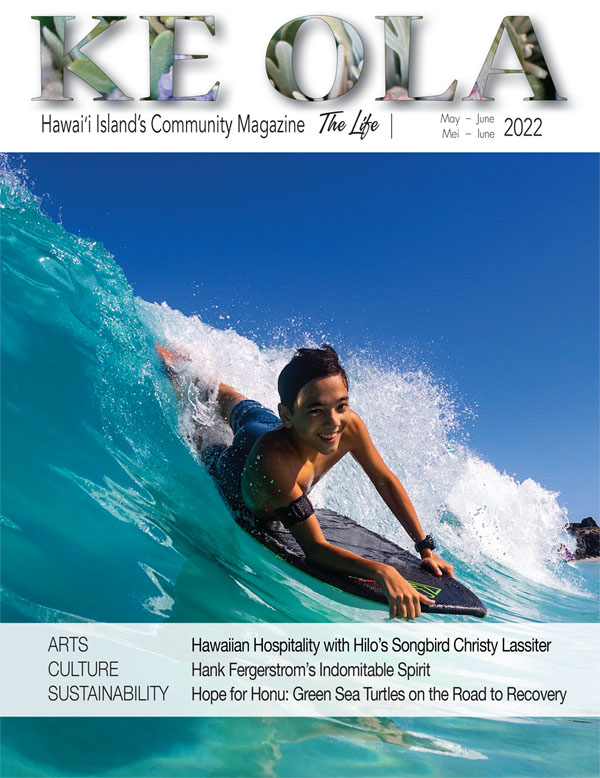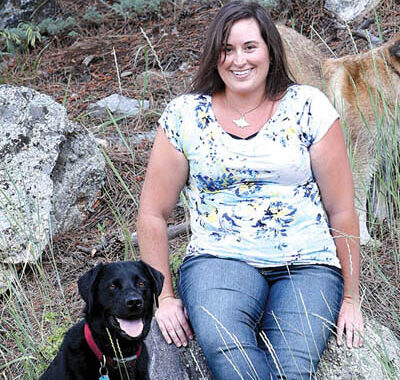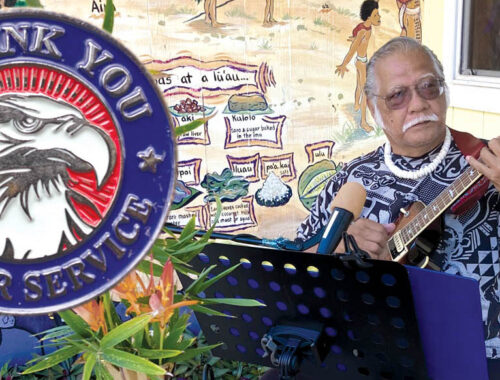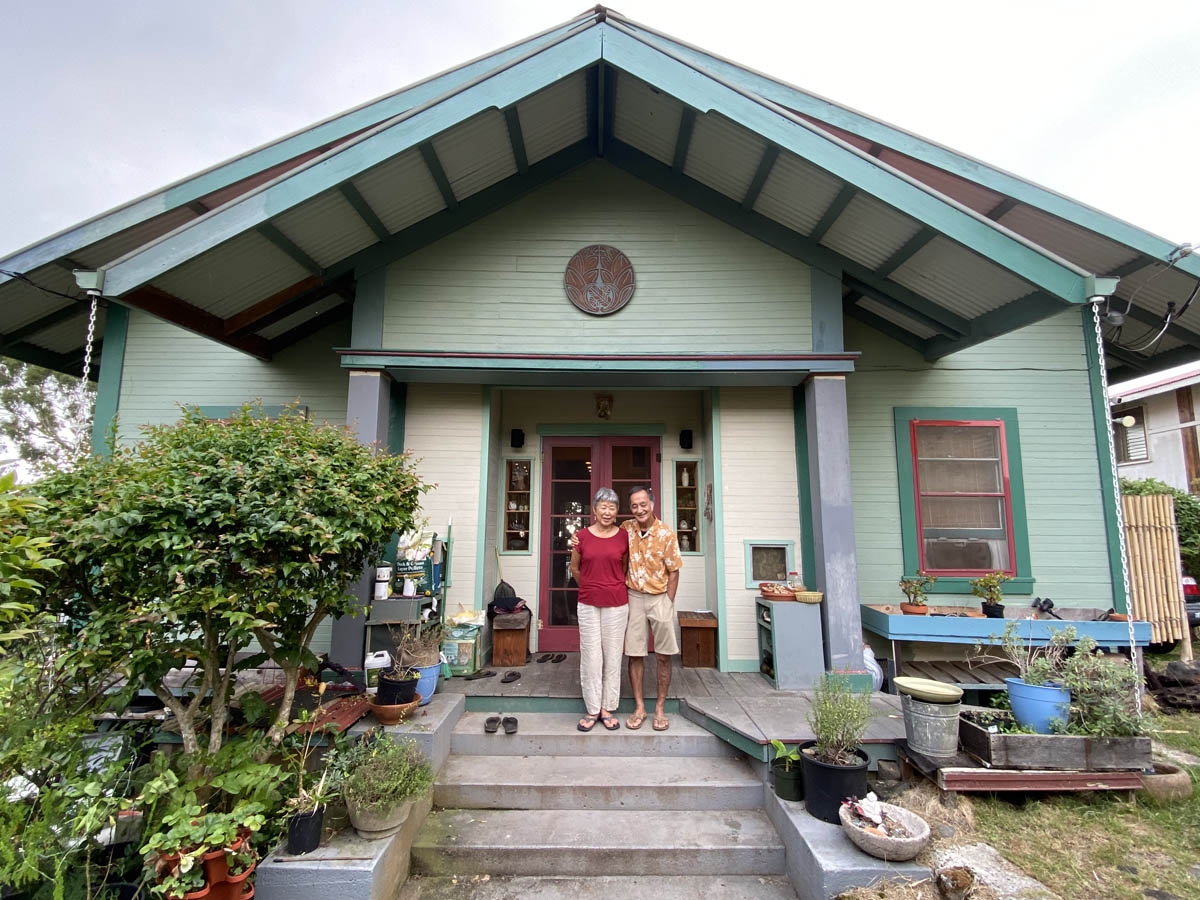
Morinoue’s Hale: A Gathering Place
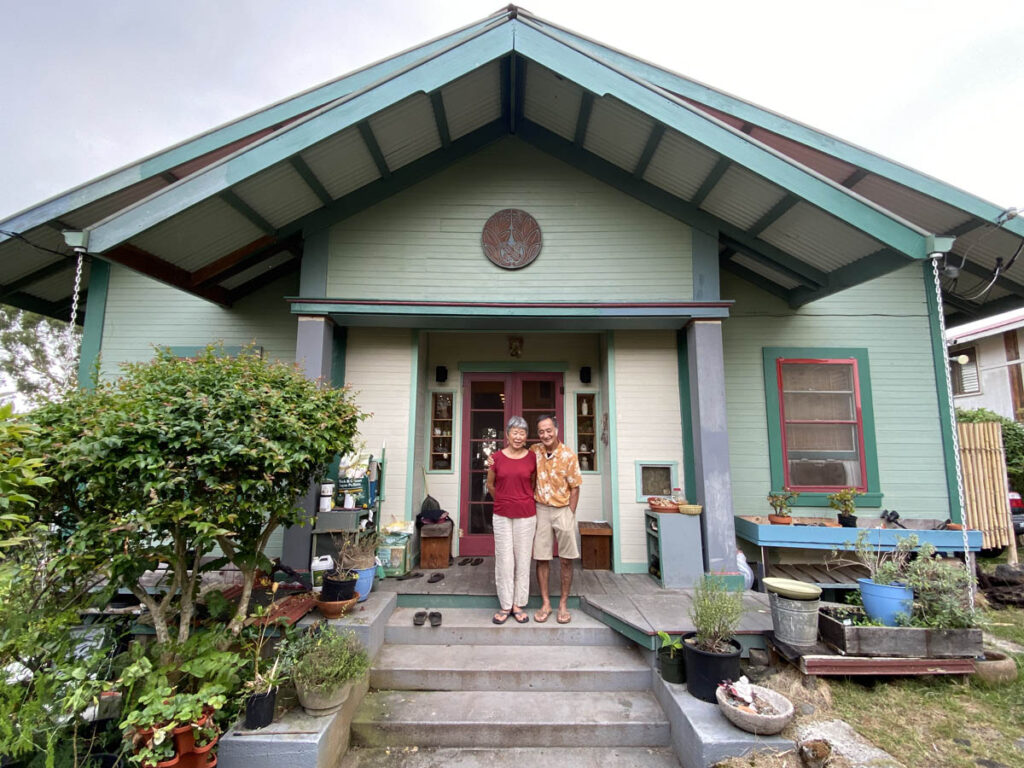
By Emily Gleason
When you walk into Hiroki and Setsuko Morinoue’s home, the first thing you’ll notice is the art. Beautiful paintings, prints, and sculptures cover the walls and all available shelf space. Their own work comingles with that of other renowned artists from around the world. As founders of Kona’s Donkey Mill Art Center, the couple have hosted countless visiting artists in their home who come to historic Hōlualoa village to teach, share, and collaborate.
The Morinoue’s home, which sits on the same property as their gallery, Studio 7 Fine Arts, are both important pieces of living history. Finished in 1923, the building was first constructed as the Japanese Community Association Hall. It was the passion project of Dr. Harvey Saburo Hayashi and dozens of Issei volunteers (first generation Japanese immigrants) who envisioned a special place for Hōlualoa’s community to gather.
A Very Historic Home
Built using recycled wood, the one room, single story building hosted community events, martial arts classes, and maybe even theater performances—two ticket windows were discovered by the front entrance during a home renovation.
Another gem discovered in the home is a wooden plaque, covered in elegant, hand-painted Japanese characters denoting the building as “Nihonjin” (Japanese people) “Kaikan” (association place). The plaque records the date the building was completed, the names of the carpenters who worked on it, and the names of the association officials. It was hiding in a crawl space above the ceiling, still attached to the main post of the house, untouched for more than 60 years.
The story of how the Morinoues came to call this historic building home begins with Hiroki’s grandmother, Mitsuru Mizukami, a Hōlualoa coffee farmer. She bought the building in the late 1940s, after World War II. During the war, the building had been taken over by the government and used as a library. It is a wonder that the building survived, given the times.
World War II’s Impact
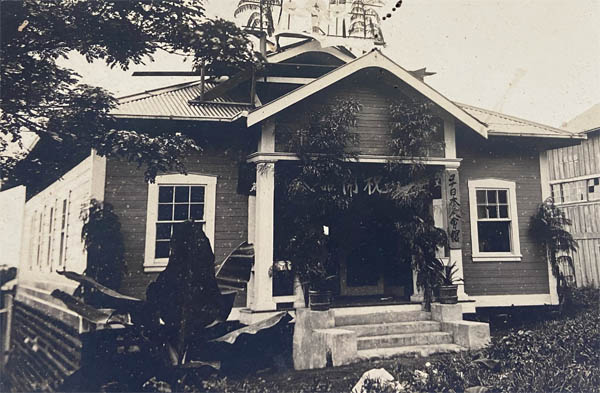
Following President Roosevelt’s Executive Order 9066 in 1942, many important Japanese cultural sites were taken over or destroyed. As a historically Japanese town, Hōlualoa was targeted. Most tragically, Order 9066 resulted in the unjust incarceration of 120,000 people of Japanese ancestry across the United States, with some 2,000 persons detained in Hawai‘i. Detainees from Hawai‘i were held at several different camps across the islands, including Kīlauea Military Camp here on Hawai‘i Island, and Honouliuli on O‘ahu.
Maki Morinoue, Hiroki and Setuko’s youngest of two daughters, recalled a conversation with an aunty who witnessed men from the community being detained as a child, “She remembered looking out the window, waving and smiling at familiar community faces on a bus, they were being taken somewhere. She was a kid and didn’t understand what was going on—that it was a bad thing. She remembered her mother facing the wall, trying to hide her tears from her daughter.”
Millie Grand, granddaughter of Dr. Hayashi, remembers that the military came to detain her grandfather, but he was very sick and elderly so they did not take him. He passed away in 1943 after a long life of service.
Dr. Hayashi, the Man Behind the Building
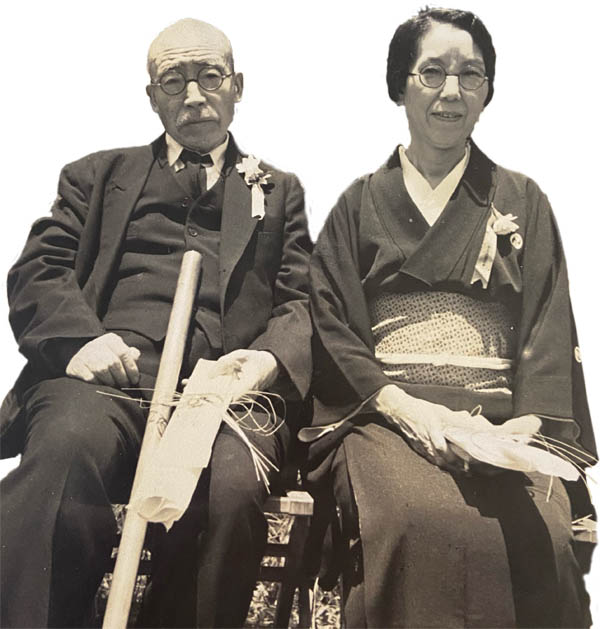
In addition to building the Japanese Community Association Hall, Dr. Hayashi was a positive force in the Hōlualoa community, including serving as its only physician (he made house calls on a horse), to starting the Kona Echo—the community’s first Japanese-English newspaper.
“He was a really hard worker,” said Millie of her grandfather, who, with her grandmother Matsui, had 12 children. “He would be out all day seeing patients and then would come home and work on the paper by kerosene lamp light.”
Millie recalls playing in the old abandoned print shop of the Kona Echo when she was a keiki growing up in the 1940s and 50s. Her mother, Lillian Towata, wrote stories and delivered papers for the Echo as a child, later going on to write a column for West Hawaii Today for 20 years. They lived across the street from the Morinoues. Her grandfather’s house was the gray two-story building where Malama i Ka Ola Holistic Health Center is located today. (For more on Dr. Hayashi’s life story, read his biography Kona Echo, by Jiro Nakano.)
Back to the story of the Morinoues’ home and gallery: after Hiroki’s grandmother Mitsuru Mizukami purchased the old Japanese Community Association Hall in the late 1940s, the family moved in, including his grandmother, mother, father, and three of six siblings. Hiroki was just three years old at the time. Soon after, the family built the Morinoue Laundry and Pool Hall on the same property, which houses Studio 7 Fine Arts Gallery today.
A Family Business
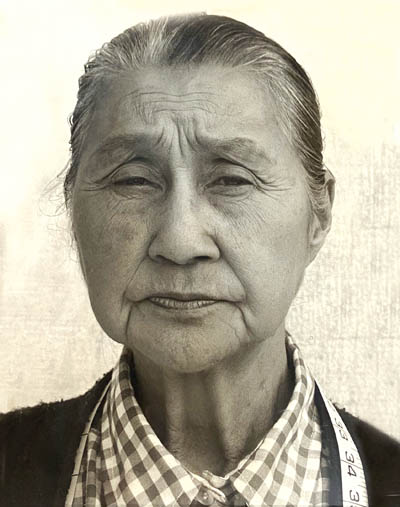
Hiroki’s mother, Ayako Mizukami-Morinoue, ran the laundry. Back then, a wash, dry, and press was only 10 cents. Ayako was also a seamstress, and always had a tape measure around her neck. Hiroki spent a lot of time in the laundry with his mom as a child, drawing on craft paper that was used to wrap up the freshly laundered clothes. “I can still remember the smell of the kerosene,” he said, talking about the old-school gas powered washing machine.
In the pool hall, Hiroki’s father Sakuichi Morinoue was something of an inter-island legend. Story has it that he was unbeatable at a game of billiards and loved to gamble. Men traveled from other islands to challenge him. In the 1970s, when Hiroki had art openings on O‘ahu, Maui and Kaua‘i, elderly gentlemen who had played pool with his father would recognize the Morinoue name and stop to inquire about Sakuichi and reflect on epic matches, lost.
In 1970, Hiroki Morinoue and Setsuko Watanabe married. In 1979, they turned the old pool hall and laundry into an art gallery. Studio 7 Fine Arts is the oldest, continuously open modern art gallery in Hawai‘i. In its first two decades, the gallery promoted local emerging artists such as Chiu Leong, Wilfred Yamasawa, Nick Mitchell, Megan Mitchell, Diane Moore, Randy Takaki, Gerald Ben, Nora Yamanoha, Glenn Yamanoha, Jan Bovard, Jeera Rattanangkoon, Catherine Merrill, Moses (master paper hat maker), Clayton Amemiya, and others.
Today the gallery showcases the extensive work of Hiroki Morinoue, Setsuko Wantanabe-Morinoue, their daughter Miho Morinoue, as well as other notable Hawai‘i-based contemporary artists and master craftsmen. Their daughter Maki runs the gallery since returning to the island with her husband and child in 2016, after retiring as a modern dance choreographer in New York City. Maki’s son Kenzo is now the fifth generation living the next chapter of the story.
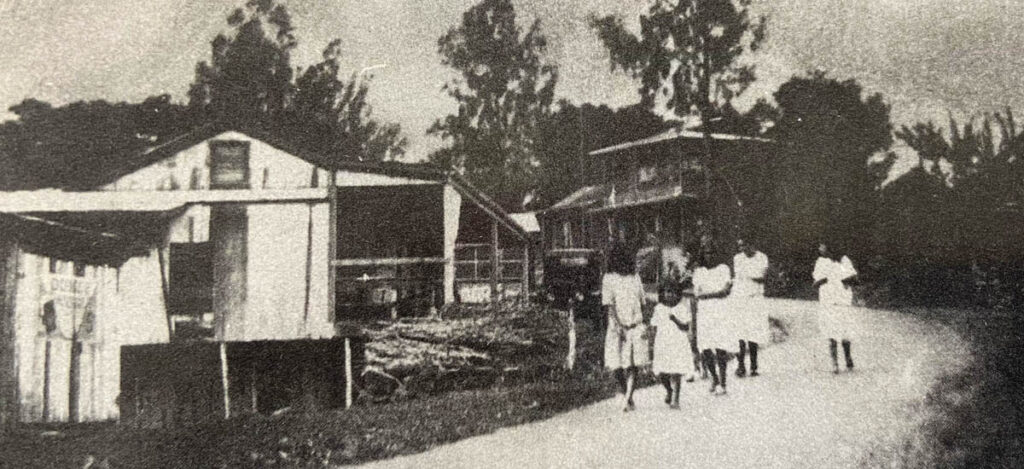
Preserving Hōlualoa History
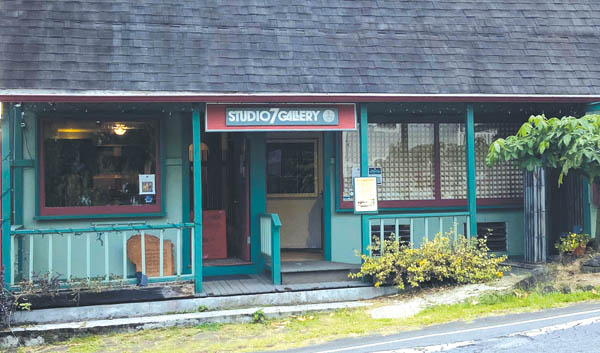
Sitting at their kitchen table, Hiroki and Setsuko speak about the importance of preserving the history of the home and gallery and the history of Hōlualoa Village. Hōlualoa is home to many historic buildings that still stand and many more that have been lost—like the Kona Art Center, founded in 1967 by Hiroki and Setsuko’s mentors Bob and Carol Rodgers. The art center, housed in an old coffee mill previously owned by the Onaka family, was painted hot pink and used to be where the community parking lot is now. The Rodgers had a 1935 Sampan which the art students would cruise around in.
“That’s where I got my start,” said Hiroki. He was 19 years old when he took his first art classes at the old Kona Art Center, which inspired him to go to art school.
“It’s very important to save our historic buildings. The pink hotel, Paul’s Place, the old post office, the old movie theater…we should hold onto our history as long as we can,” said Millie, who remembers working at Paul’s Place scooping ice cream as a teen, serving patrons of the old movie theater.
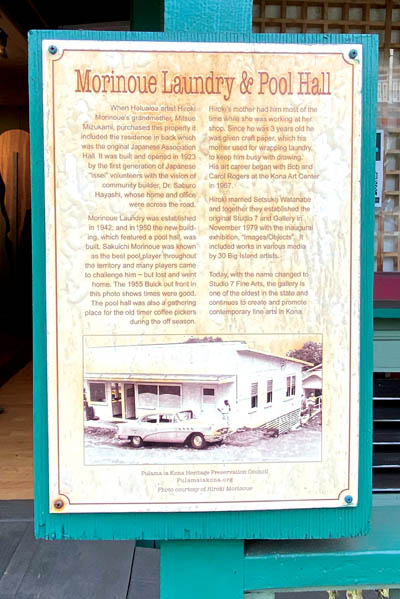
“We don’t want to lose it,” said Setsuko of the history held in Hōlualoa’s historic buildings. “We all need to know where we are from, to know who we are, what we are going to be.” History informs identity. Identity informs creativity. Creativity is what makes the future.
In the early 2000s, the Morinoues renovated their historic home. “We gutted it and for the first few days before we put the walls up, we saw the building in its original stage, it was pretty remarkable,” said Hiroki. They recycled pieces of the original wood and saved as many of the fixtures as possible. The front doors are from the original building, as well as the home’s redwood exterior. Hiroki opened up the ceiling, getting rid of the attic crawl space and installed modern details like larger windows and, of course, a giant granite countertop that is perfect for entertaining.
Nearly a century later, their home is still serving the same purpose as it did all those years ago—a gathering place.
So, what is it like living in a piece of Hōlualoa history? “It feels good,” said Hiroki, smiling. “This building was made to be ‘the people’s place’ and you feel that energy,” added Setsuko. “We try to keep that alive.” ❖
For more information: studiosevenfinearts.com
